
('Aurora and Iridium Flash' © John Ahrns, 2010)
TELEOLOGICAL CINEMA: FILMS AS LANGUAGE IN ARRIVAL
by CHRIS MACHELL
First published in 1998 in the science fiction anthology series Starlight, Ted Chiang’s ‘Story of Your Life’ tells the story of humanity’s first contact with aliens. After the beings appear in orbit around Earth, world-renowned linguist Dr. Louise Banks is drafted in to attempt to communicate with the creatures dubbed ‘heptapods’.
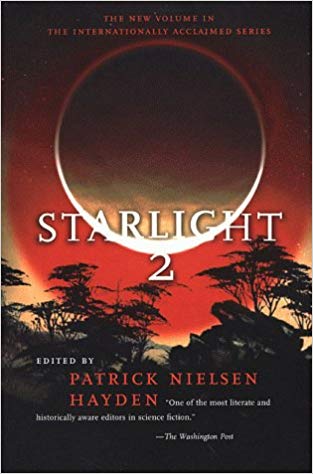 In 2016, French-Canadian director Denis Villeneuve adapted ‘Story of Your Life’ as Arrival. Villeneuve was initially sceptical about Chiang’s conceptually dense story surviving the Hollywood adaptation process. His reservations can be felt throughout the film, which balances the themes and heady concepts of Chiang’s meditative text with the needs of a conventional cinematic narrative. Villeneuve’s solution to the problem of adapting a linguistically dense text is to reinterpret its language visually, translating text to image. Indeed, Chiang’s story is arguably the perfect candidate for such a treatment. In so doing, Villeneuve restructures the themes of Chiang’s text to explore the ways that the visual language of cinema represents time as an experiential phenomenon shaped by memory and emotion.
In 2016, French-Canadian director Denis Villeneuve adapted ‘Story of Your Life’ as Arrival. Villeneuve was initially sceptical about Chiang’s conceptually dense story surviving the Hollywood adaptation process. His reservations can be felt throughout the film, which balances the themes and heady concepts of Chiang’s meditative text with the needs of a conventional cinematic narrative. Villeneuve’s solution to the problem of adapting a linguistically dense text is to reinterpret its language visually, translating text to image. Indeed, Chiang’s story is arguably the perfect candidate for such a treatment. In so doing, Villeneuve restructures the themes of Chiang’s text to explore the ways that the visual language of cinema represents time as an experiential phenomenon shaped by memory and emotion.
In both the short story and film, Louise perseveres in learning the heptapods’ language, eventually making the breakthrough discovery that the heptapods’ written language, or ‘logograms’, does not represent speech in the way that written words do. Rather, they function in the same way as a circle with a diagonal line through it: the sign represents the concepts of ‘stop’ or ‘no’ without having a direct corollary with a spoken word. Moreover, the logograms are non spatially-oriented, meaning that ‘sentences’ can be written in any direction and still mean the same thing.
In the text, the exact appearance of the logograms are kept vague, whereas Arrival represents them as circular shapes that are manipulated in the air with heptapod ink. This translation from the textual to the visual is a subtle but important distinction from Chiang’s story, rather apt given the graphic quality of the logograms themselves. Subtle visual distinctions exist elsewhere in Villeneuve’s adaptation: instead of sitting above the Earth in orbit, the heptapods’ ships hover mere metres above the ground. Their huge, monolithic shapes recall the smooth alien vessels of classic invasion flick Earth Versus the Flying Saucers, as well as the black obelisk of 2001: A Space Odyssey. In the short story, it matters little where the ships themselves are, but in the film they fulfil an important dramatic function as a visual signifier of the aliens’ incomprehensible difference to us.
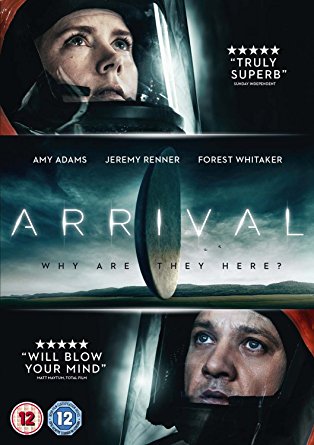 The crescent-shaped screens that the heptapods use to communicate in Chiang’s text mean that Louise never actually gets to see the aliens in the flesh – a fitting metaphor for the profound separation between their species. In Arrival, these screens are replaced with a window in the ship’s viewing chamber – no longer a literal screen but no less symbolic in its separation between human and alien.
The crescent-shaped screens that the heptapods use to communicate in Chiang’s text mean that Louise never actually gets to see the aliens in the flesh – a fitting metaphor for the profound separation between their species. In Arrival, these screens are replaced with a window in the ship’s viewing chamber – no longer a literal screen but no less symbolic in its separation between human and alien.
The most significant change, however, is in the film’s representation of Louise’s flash-forwards to the death of her future daughter. In ‘Story of Your Life’, it is made explicit that these sequences are glimpses of Louise’s future self, as if she is narrating the present story from the future: ‘I know how this story ends; I think about it a lot. I also think a lot about how it began, just a few years ago, when ships appeared in orbit and artefacts appeared in meadows.’
In contrast, Arrival uses clever editing and our expectations of linear storytelling to make it appear that the death of her daughter happened before the main events of the film. Amy Adams’ emotionally withdrawn performance as Louise further reinforces our assumptions about the film’s sequence of events. It is only when the events of the present seem to start acting on Louise’s ‘memories’ of her daughter that it becomes clear that we are not seeing the past.
Chiang explores time as something that can be shaped by language as Louise and Gary, a physicist with whom Louise is collaborating, begin to understand how the heptapods perceive the physical world. In contrast, Villeneuve reshapes this gradual development as a classic cinematic twist, dropping the revelation in the final act so that Louise can use her knowledge of the future to avert catastrophe. We learn that where human speech is causal – one word following the next – Heptapod is teleological – word order doesn’t matter as they know everything they are going to say or write before they begin. The heptapods’ notion of physics is similarly teleological rather than causal, so that objects move along set paths towards a predetermined destination. Using the example of a ray of light refracted through water, Gary gives an example of a teleological model of physics:
the light has to examine the possible paths and compute how long each one would take […] to do that, the ray of light has to know just where its destination is […] the light ray has to know all that ahead of time, before it starts moving.
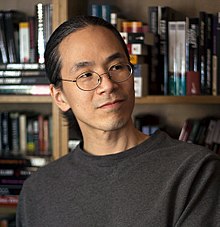 In their conception of both language and physics, the heptapods must know the end point before they begin. As a result, the constitution of their language has shaped their conception of physics, which in turn means that they do not perceive time as symmetrical rather than linear. As Louise’s fluency in Heptapod increases, she too begins to experience time as symmetrical, even occasionally experiencing the past, present and future simultaneously.
In their conception of both language and physics, the heptapods must know the end point before they begin. As a result, the constitution of their language has shaped their conception of physics, which in turn means that they do not perceive time as symmetrical rather than linear. As Louise’s fluency in Heptapod increases, she too begins to experience time as symmetrical, even occasionally experiencing the past, present and future simultaneously.
In ‘Story of Your Life’, Chiang drops subtle hints that experiential time is being warped. Where the present events are written in the past tense, the story’s flash-forwards are written in a mixture of present and future tense: “Right now your dad and I have been married for about two years”; “That will be in the house on Belmont Street”. The confused tense of “the request for that meeting was perhaps the second most momentous phone call in my life. The first, of course, will be the one from Mountain Rescue”, undermines our sense of temporal linearity. In destabilising the reliability of past and present tenses, Louise presents linear time not as objective reality but as a linguistic construct.
Much like the heptapods’ logograms, Arrival is ‘written’ teleologically – beginning and ending at the same time, moving towards a predetermined destination. Villeneuve takes this one step further by explicitly conceiving cinema as a linguistic construct, in effect transforming the written text of ‘Story of Your Life’ into a cinematic logogram – a visual teleological text.
~
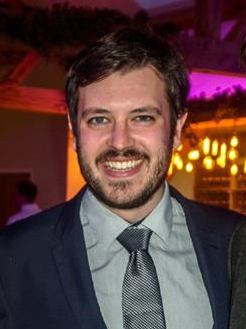

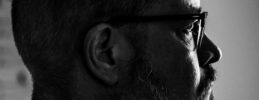
One thought on “Teleological Cinema: Film as Language in Arrival”
Comments are closed.